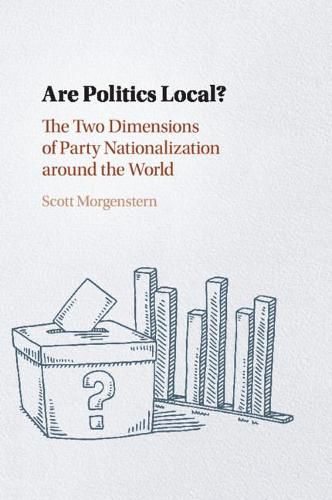Readings Newsletter
Become a Readings Member to make your shopping experience even easier.
Sign in or sign up for free!
You’re not far away from qualifying for FREE standard shipping within Australia
You’ve qualified for FREE standard shipping within Australia
The cart is loading…






Are politics local? Why? Where? When? How do we measure local versus national politics? And what are the effects? This book provides answers to these questions, within an explicitly comparative framework, including both advanced and developing democracies. It does so by using a statistically-based and graphical account of party nationalization, providing methodology and data for legislative elections covering scores of parties across dozens of countries. The book divides party nationalization into two dimensions - static and dynamic - to capture different aspects of localism, both with important implications for representation. Static nationalization measures the consistency in a party’s support across the country and thus shows whether parties are able to encompass local concerns into their platforms. Dynamic nationalization, in turn, measures the consistency among the districts in over-time change in electoral results, under the presumption that where districts differ in their electoral responses, local factors must drive politics. Each of the two dimensions, in sum, considers representation from the perspective of the mix of national versus local politics.
$9.00 standard shipping within Australia
FREE standard shipping within Australia for orders over $100.00
Express & International shipping calculated at checkout
Are politics local? Why? Where? When? How do we measure local versus national politics? And what are the effects? This book provides answers to these questions, within an explicitly comparative framework, including both advanced and developing democracies. It does so by using a statistically-based and graphical account of party nationalization, providing methodology and data for legislative elections covering scores of parties across dozens of countries. The book divides party nationalization into two dimensions - static and dynamic - to capture different aspects of localism, both with important implications for representation. Static nationalization measures the consistency in a party’s support across the country and thus shows whether parties are able to encompass local concerns into their platforms. Dynamic nationalization, in turn, measures the consistency among the districts in over-time change in electoral results, under the presumption that where districts differ in their electoral responses, local factors must drive politics. Each of the two dimensions, in sum, considers representation from the perspective of the mix of national versus local politics.